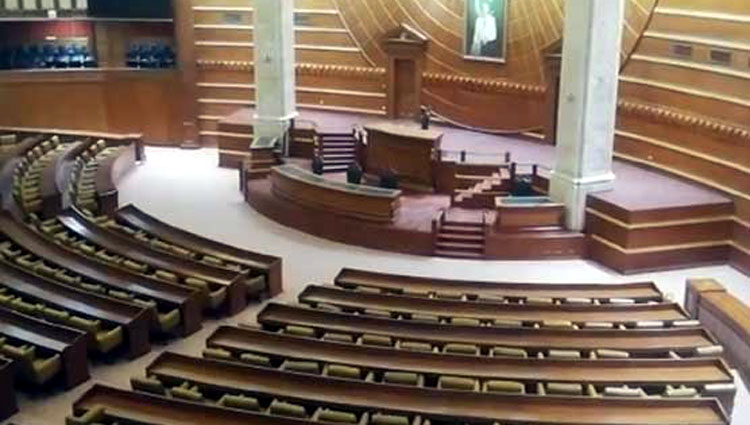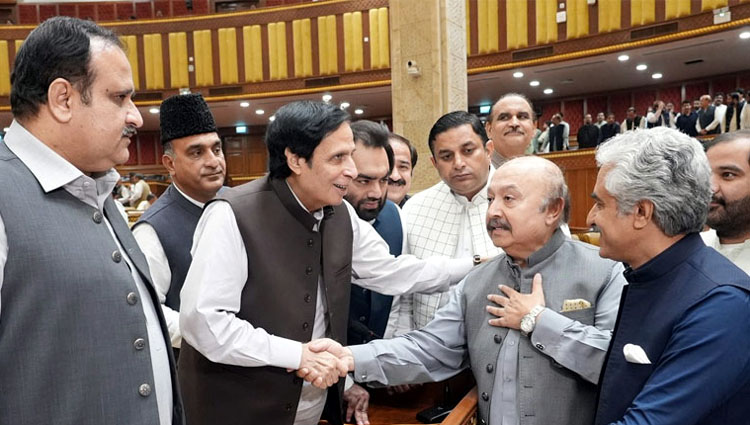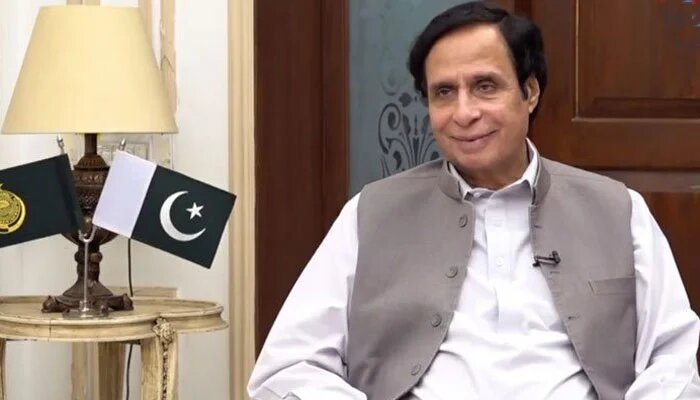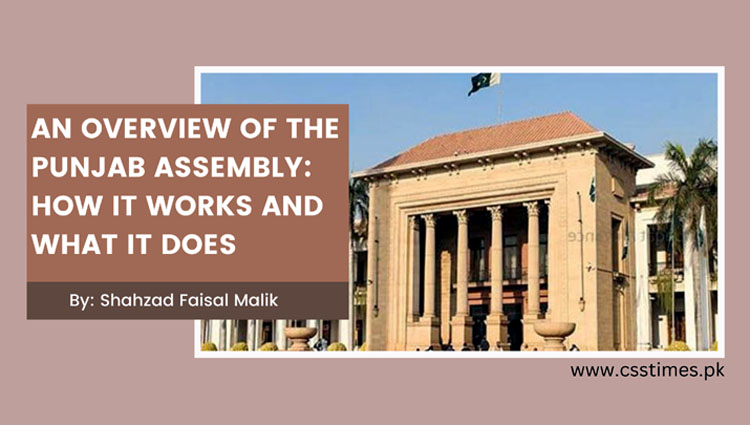The Punjab Assembly is the legislative body of the province of Punjab. It is a unicameral assembly, consisting of 371 members who are elected for five-year terms. The assembly is responsible for making laws and policies that apply to the province of Punjab, as well as overseeing the work of the government of Punjab.
The assembly meets in Lahore, the capital of Punjab. The speaker of the assembly, who is elected by the members, presides over the sessions of the assembly and ensures that the rules of procedure are followed. The chief minister of Punjab, who is the leader of the majority party or coalition in the assembly, is responsible for the day-to-day administration of the government.
The assembly has several committees that focus on specific areas of policy, such as finance, education, health, and agriculture. These committees conduct inquiries, hold hearings, and make recommendations to the assembly on legislation and other matters related to their respective areas of responsibility.
The assembly also has the power to hold the government accountable through its oversight function. Members can ask questions of the government, raise issues of concern, and propose legislation. The assembly can also pass motions of no confidence in the government, which can lead to the government being dissolved and new elections being held.
Duration of Punjab Assembly

The duration of the Provincial Assembly of the Punjab is five years, unless it is dissolved earlier by the President of Pakistan on the advice of the Chief Minister or on the resolution of the assembly itself. The assembly is dissolved automatically at the expiration of its term, and new elections must be held to elect a new assembly.
During its term, the Provincial Assembly is responsible for making laws and policies for the province, overseeing the work of the government, and representing the interests of the people of the province. The assembly is composed of elected members, who are chosen by the people of the province in a general election.
The Provincial Assembly meets regularly to conduct its business, and its proceedings are open to the public. The assembly has a number of committees that are responsible for examining specific issues and making recommendations to the assembly. The assembly also has the power to impeach public officials and hold them accountable for their actions.
How Punjab Assembly Members are elected:
Members of the Punjab Assembly are elected through a system of universal adult suffrage, which means that all citizens of Pakistan who are 18 years of age or older and meet the eligibility requirements have the right to vote. Elections for the assembly are held every five years, unless the assembly is dissolved earlier.
In Pakistan, the elections are held under the supervision of an independent election commission, which is responsible for conducting free and fair elections. Political parties nominate candidates to contest the elections, and voters cast their ballots for the candidate of their choice. The candidate who receives the most votes in a particular constituency is elected as the member of the assembly for that constituency.
The assembly consists of 371 members, who are elected from different constituencies within the province of Punjab. The number of seats allocated to each constituency is determined on the basis of population. The electoral system used in Pakistan is a first-past-the-post system, which means that the candidate who gets the most votes in a constituency wins the seat, regardless of whether they receive a majority of the votes or not.
Read also: Physical Features of Pakistan
Approval of budgets in Punjab assembly
In Pakistan’s Punjab assembly, the budget is an annual financial plan that outlines the government’s proposed expenditures and revenues for the coming year. The budget must be approved by the assembly before it can take effect.
The process for approving the budget in the Punjab assembly typically involves the following steps:
- The government prepares the budget and submits it to the assembly for consideration.
- The budget is reviewed and debated by the members of the assembly.
- The assembly may make changes to the budget and vote on the amended version.
- If the budget is approved by a majority of the members of the assembly, it is passed into law.
The budget process in the Punjab assembly is an important part of the legislative process, as it determines how the government will allocate its resources and prioritize its policies. The assembly has a significant role in shaping the budget and ensuring that it reflects the needs and priorities of the people of the province.
How the Chief Minister is elected in the Punjab Assembly

In Punjab Assembly, the Chief Minister (CM) is elected by the members of the assembly from among their own ranks. The process for electing the Chief Minister is as follows:
- After a general election, the members of the assembly are sworn in and a Speaker is elected.
- The party or coalition that holds the most seats in the assembly nominates a candidate for the position of Chief Minister.
- The nominated candidate must then be elected by the members of the assembly in a vote.
- If the nominated candidate is elected as Chief Minister, they are then appointed by the Governor of the province.
- The Chief Minister is typically the leader of the party or coalition that holds the most seats in the assembly, and is responsible for leading the government and implementing its policies. The Chief Minister is also responsible for managing the affairs of the province and representing the province at the national level.
In some cases, more than one candidate may be nominated for the position of Chief Minister, in which case the members of the assembly must vote to determine the winner. The Chief Minister is typically elected by a simple majority of the members of the assembly, meaning that the candidate who receives the most votes is elected as Chief Minister.
Election of Speaker
The procedure for selecting the Speaker of the Punjab assembly in Pakistan is as follows:
- Candidates for the position of Speaker are nominated by members of the assembly.
- The members of the assembly vote to elect the Speaker. In most cases, the candidate who receives the most votes is elected as the Speaker.
- The newly elected Speaker takes an oath of office, in which they pledge to uphold the Constitution of Pakistan and to fulfill their duties as Speaker to the best of their ability.
- The process of selecting the Speaker usually takes place after a general election, when the members of the new assembly are sworn in. The Speaker is typically elected by a simple majority of the members of the assembly, meaning that the candidate who receives the most votes is elected as the Speaker.
In some cases, more than one candidate may be nominated for the position of Speaker, in which case the members of the assembly must vote to determine the winner. The Speaker is typically a member of the party or coalition that holds the most seats in the assembly, but this is not always the case.
Responsibilities of the Speaker
The Speaker of the Punjab assembly is responsible for presiding over the proceedings of the assembly and ensuring that the rules and procedures of the assembly are followed. The Speaker is also responsible for maintaining order in the assembly and ensuring that the debates and discussions that take place are conducted in a respectful and orderly manner.
In addition to these duties, the Speaker is also responsible for representing the assembly to the public and to other branches of government. The Speaker may also have other responsibilities, such as overseeing the administration of the assembly and managing the staff and resources of the assembly.
In Pakistan’s parliamentary system, the Speaker is typically a member of the ruling party or coalition, but is expected to be impartial and unbiased in the performance of their duties. The Speaker is elected by the members of the assembly and serves as the head of the assembly. The Speaker is typically considered to be the second highest authority in the assembly, after the head of government.
Key Powers and functions of Punjab Assembly
The powers and functions of the Punjab Assembly in Pakistan are outlined in the Constitution of Pakistan. Some of the key powers and functions of the assembly include:
Making laws:
The assembly has the power to make laws on a wide range of issues that affect the people of the province. These laws must be in line with the Constitution of Pakistan and must be passed by a majority of the members of the assembly.
Overseeing the work of the government:
The assembly has the power to scrutinize the work of the government and hold it accountable for its actions. This includes the power to question government officials, conduct investigations, and call for the release of information.
Approving the budget:
The assembly has the power to approve the government’s annual budget and to make changes to it. The budget must be approved by the assembly before it can take effect.
Electing the Chief Minister:
The assembly has the power to elect the Chief Minister, who is the head of the government in the province.
Impeaching public officials:
The assembly has the power to impeach public officials, including the Chief Minister, for misconduct or violation of the law.
These are just a few examples of the powers and functions of the Punjab Assembly. The assembly has a number of other powers and responsibilities, including representing the interests of the people of the province, making policies to promote the welfare of the people, and playing a role in the appointment of certain public officials.
The role of committees in the Punjab Assembly
Committees play a crucial role in the work of the Punjab Assembly in Pakistan. There are several types of committees that are responsible for different aspects of the assembly’s work, including:
Standing committees:
These committees are responsible for examining specific policy areas and making recommendations to the assembly. Examples of standing committees in the Punjab Assembly include the Public Accounts Committee, the Public Undertakings Committee, and the Estimates Committee.
Select committees:
These committees are formed on an ad-hoc basis to examine specific issues or conduct investigations.
Joint committees:
These committees are made up of members of both the assembly and the senate, and are responsible for examining issues of national importance.
Committees are typically made up of a small number of members of the assembly, who are appointed by the Speaker. The chairperson of the committee is usually elected by the members of the committee.
The role of committees in the Punjab Assembly is to provide in-depth examination and analysis of specific issues or policy areas. They have the power to call witnesses, gather evidence, and make recommendations to the assembly. Committees also play a key role in the budget process, as they are responsible for reviewing and analyzing the government’s proposed expenditures and revenues.
Check also: Pakistan Affairs MCQs
The role of the opposition in the Punjab Assembly
The opposition in a legislative body such as the Punjab Assembly in Pakistan plays a crucial role in holding the government accountable for its actions and policies. The opposition is made up of members of the assembly who are not part of the ruling party or coalition. The opposition’s primary function is to scrutinize and challenge the actions and decisions of the government, and to propose alternative policies.
The opposition has several tools at its disposal to fulfill this role, including the ability to ask questions of government ministers, to propose motions and amendments to legislation, and to engage in debate and discussion on the floor of the assembly. The opposition can also use its presence in committees and other parliamentary bodies to scrutinize government actions and hold it to account.
Overall, the opposition plays a vital role in ensuring that the government is transparent and accountable to the people, and in providing a check on the power of the ruling party or coalition.
What is “Vote of Confidence” or vote of no-confidence and how it works?
In Pakistan, a vote of confidence (also known as a vote of no confidence) is a parliamentary procedure in which the members of a legislative body vote to express their support for or opposition to the government or a particular policy. In the Punjab assembly, a vote of confidence is typically called when there is uncertainty about the ability of the government to continue governing effectively.
To initiate a vote of confidence in the Punjab assembly, a member of the assembly must propose a motion stating that they have no confidence in the government or a specific policy. This motion must then be seconded by another member of the assembly. If the motion is passed, it means that the majority of the members of the assembly do not have confidence in the government or the policy in question.
The government can respond to a vote of confidence in a number of ways. If the government is confident that it has the support of the majority of the members of the assembly, it may choose to allow the vote to proceed and seek to win the vote. On the other hand, if the government believes that it is likely to lose the vote, it may seek to delay or avoid the vote altogether.
In the event that a vote of confidence is held and the government loses, the consequences can be significant. The government may be required to resign or may be dismissed by the head of state. If this occurs, the assembly may be dissolved and new elections may be held.
The Role of the Punjab Assembly in Shaping Provincial Policy
The Punjab Assembly plays a vital role in shaping provincial policy in Pakistan. As the legislative body of the province, it is responsible for making laws and policies that apply to the province of Punjab.
The assembly has the power to initiate and pass legislation on a wide range of issues that affect the people of Punjab, including education, healthcare, agriculture, and economic development. Members of the assembly can propose new laws or amendments to existing laws, and the assembly debates and votes on these proposals. If a proposed law is passed by the assembly and signed by the governor of Punjab, it becomes a law that applies to the entire province.
In addition to its legislative role, the Punjab Assembly also has the power to oversee the work of the government of Punjab. Members of the assembly can ask questions of the government, raise issues of concern, and hold the government accountable for its actions. The assembly can also pass motions of no confidence in the government, which can lead to the government being dissolved and new elections being held.
Through its legislative and oversight functions, the Punjab Assembly plays a crucial role in shaping the direction and policies of the province of Punjab.
The impact of the Punjab Assembly on the lives of the people of the province
The Punjab Assembly, as the legislative body of the Pakistani province of Punjab, plays a significant role in shaping the policies and laws that affect the lives of the people who live in the province. The assembly is responsible for passing laws and making decisions on a wide range of issues that impact the people of Punjab, including education, healthcare, economic development, infrastructure, and public safety.
Through its legislative and oversight functions, the Punjab Assembly has the power to influence the direction of the province and to shape the policies and programs that are implemented by the provincial government. This can have a direct impact on the quality of life of the people of Punjab, including the services and support that are available to them, the economic opportunities that are available, and the overall well-being of the community.
Overall, the Punjab Assembly plays a vital role in representing the interests of the people of the province and in working to improve their lives.
Some Major achievements of Current Chief Minister Punjab Chaudhry Parvez Elahi

There are several major achievements that Chaudhry Parvez Elahi can point to during his time as Chief Minister of the Pakistani province of Punjab. Some of these include:
Infrastructure development:
Chaudhry Parvez Elahi’s government implemented a number of infrastructure projects, including the construction of new roads, bridges, and other transportation links, which helped to improve connectivity within the province and facilitate economic growth.
Economic development:
Chaudhry Parvez Elahi’s government worked to promote economic development in Punjab by supporting small businesses, encouraging foreign investment, and improving the business climate. This helped to create jobs and stimulate economic growth in the province.
Education reform:
Chaudhry Parvez Elahi’s government implemented a number of initiatives to improve the education system in Punjab, including increasing funding for schools and establishing new programs to support disadvantaged students.
Healthcare reform:
Chaudhry Parvez Elahi’s government worked to improve the healthcare system in Punjab by building new hospitals and clinics, and by increasing funding for healthcare programs. This helped to improve access to healthcare for people living in the province.
Improved relations with local authorities:
Chaudhry Parvez Elahi’s government worked to improve relations with local authorities and to decentralize decision-making, which helped to increase the responsiveness and effectiveness of the government.
Overall, these achievements helped to improve the lives of the people of Punjab and contributed to the development of the province.
“We value your input! Share your thoughts and opinions in the comments below.”








[…] Read also: An Overview of the Punjab Assembly: How it Works and what it does […]
[…] Read also: An Overview of the Punjab Assembly: How it Works and what it does […]